Hortiland (Landes) – Chrysanthemums
summer 2019, greenhouse n°6 of 2500m2.
Setting up a culture of Chrysanthemums, small flowers in 4liter pots (2500).
- 19th June : potting the cuttings in clay pots (peat substrate + clay).
- Spray with water and manure ratio 1/100
- Growing plants in close proximity for 4 weeks, separating them during week 29 (17th July).
- Water pipes in sub-irrigation with fertilise water (conductivity 1.5 µs) and adding manure 1/100.
Maintaining the plant growth (dwarfing) is usually done by using Diazide, chemical substance applied regurlarly to keep a round and compact plant. We choose thigmonorphogenesis, a mechanic method where we stroke the plants with a veil several times a day.
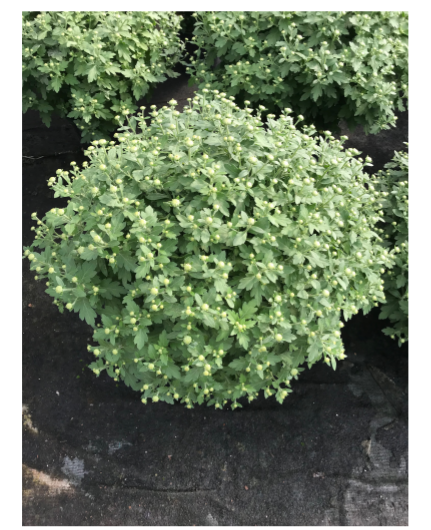
Protecting the plantation : Going over with 1 treatment of powdered diatoms in prevention before plantation (core disinfection) and 1 diatoms spraying treatment before loosening the plants.
Parasites found : Strong presence of aphids which was contained by the natural presence of the Ahidius Colemani fly ; California thrips was contained by the diatoms. Other parasites monitored, « Duponchelia » moth, very resistant to chemical treatments. The green leafage is starting to be strained due to the development of sooty mold.
On the plant nursery, 3 other almost identical parcels are run the same way and show the same symptoms since beginning of August.
Purchase of the Botanical Biodynamiser of Gaujacq directly at the Botanic plant nursery of Gaujacq from Jean Thoby.
Only greenhouse number 6 will follow this protocole. I have decided to do 1 treatment of biodynamised water a week for a period of 3 weeks.
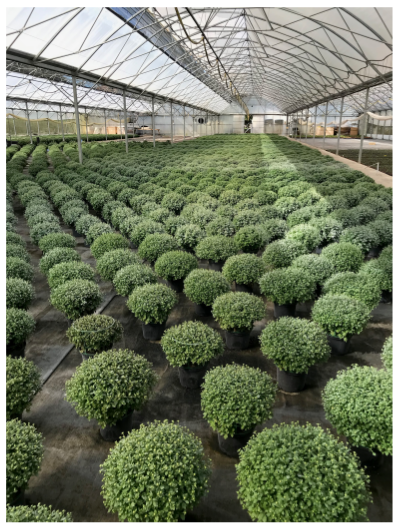
Very rapidly observation shows that the parasistes stop progressing. During the second and third treatment of biodynamised water, we observe a strong increase of the auxiliaries, including the temnostoma vespiforme and overfly (as the most visible).
During these 3 weeks we needed to help the natural defenses with 2 bio attacker treatments.
September is comforting us in our results: we can see a change in the leaf quality (health) after the first treatment. No more BBG is sprayed until the 10th of October, at that date a localised thrips attack is treated with liquid diatoms.
Observation of the other parcels of Chrysanthemum :
5 treatments in average of bio attackers were needed on the cultures to deal with the different parasites, whereas only 2 treatments were needed on the trial parcel (no 6).
Conclusion : In parcel number 6, the quality of the plants (commercial and esthetics criterias) is on every point identical to the others. However running the follow up (sanitary protection) is greatly simplified.
The arrival of the Botanical Biodynamiser of Gaujacq (beginning of August) is a little late ; we think applying the protocole earlier could have prevented the first parasites attack and in the same way, we think that repeating the treatment later on (in September) could have prolonged the positive results on the plants.
This is what will be confirmed in 2020 with a general treatment done by Jean Marc Tachoires.
When Scrive plant nursery called us in January 2019, we had observed an infestation of powdery mildew recurrent for years. It was so strong that it would persist on the wood of the plant throughout the winter.
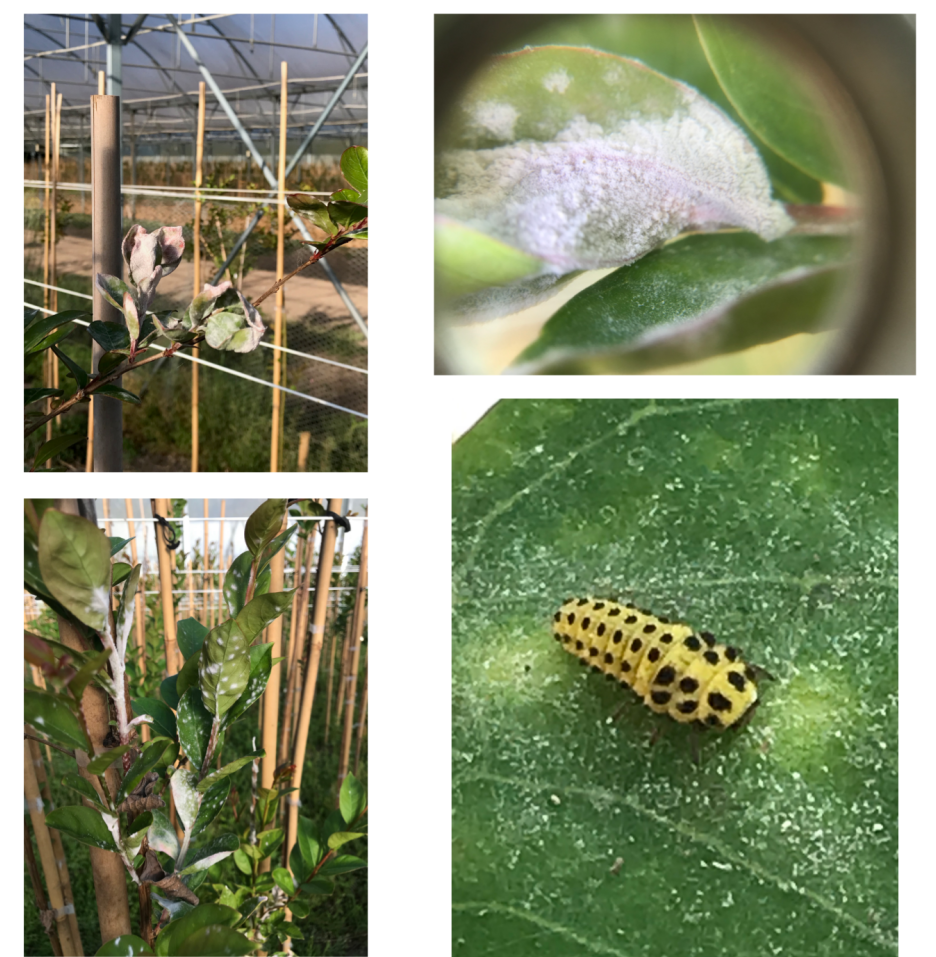
When a parcel is badly impacted, we evaluate the general state by doing a surface electric activity reading of the plants. In this particular case, the activity was very weak and let us prognostic a very strong attack of this Erysiple australiana.
We have acquired the certainty that the better and healthier a plant is, the more intense the electrical activity will be. We then need to find solutions for the plant to be naturally active or help it to be independent again. For this Lagerstroemia parcel we used the sound of a Dicksonia antartica, diffuse it’s music to the distressed plants. Because this arborescent fern has an over 400 millions years of life span evolution on Earth it became so forceful. One of our major work discoveries is the estalishement that by transcoding the surface electrical activity of a plant when it is in contact with a person or other plants, it adapts it’s very own electric activity in order to produce the corresponding sound to trigger the right amino acids which compose the proteomics destined and necessary for the balance and well being of that person or plant. This paradigme completely change the way we cultivate…
And hour after playing the live music of the fern the Lagerstroemia have slightly higher electrical activity, which is a good sign. The sounds emitted by the fern were recorded and this botanical music was then incorporated in the information conveyed to the BBG water via the LED. This biodynamised water sprayed on the aerial part of the plants will inhibit the presence of this fungus.
Then every week, instead of the usual treatments, the BBG water will be sprayed either with the standard or advanced treatment, depending on the evolution of the fungus. For the BBG water to work well it is important that the informed water doesn’t come in contact with any synthetic molecules. If a reservoir or irrigation pipes has ever been in contact with synthetic molecules it cannot be used and the BBG water will have to reach the plants another way.
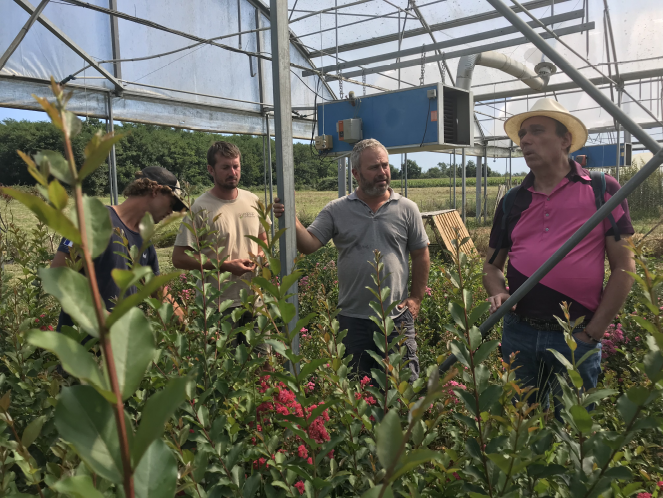
The more the team of the production is behaving and working in a positive attitude and consciousness, the more the experiment protocoles are easy to put in place. On these pictures, professor Marc Henry (Strasbourg University, France) wanted to know about our research, visiting in August 2019 the places that we used for our tests, checked our protocoles : a few weeks later, he validated our work.
Since the beginning of the treatments, the cultures become phyto free. That way the fungus can find refuge in the nearby grass and the auxiliaries can live directly on the spot. Height months after the beginning of the intervention, mycophagous insects start to appear. (Halysia sedecimguttata) and 99% of the plants are free of powdery mildew.
Juin 2020 at Estibeaux, the whole plantation got it’s vitality back.
Full report – SARL Lagesrtroemia Estibeaux – France (40)
1.Global Presentation
The Lagestroemia SARL was created in 2007 by Antoine Scrive from Scrive plant nursery and Christian Gaurrat from Gaurrat plant nursery, two nurseries in the South-ouest of France. It’s in 2006, they multiplied 40 000 young plants from hybrides carefully selected which were then grown in the ground covered by a greenhouse for 3 years. This collection is under the brand « Indyacharms » in reference to their Indian nickname : Indian Lilac. This collection can be divided in 5 varieties.
- Braise d’été®
- Fuchsia d’été®
- Camaïeu d’été®
- Violet d’été ®
- Neige d’été®
These varieties are available in small stems of 0,8m; semi-stems of 1.10m or stems of 1.40; 1.70m and 2m.
2. Farming conditions
A 3000m3 greenhouse was built in order to cover the Lagerstroemia stems planted in the ground for a period of 3 years aiming to optimise climatic conditions for the plants. During the first 10 years this farm was using a conventional and traditional follow up, the same way it would be for an arboricultural farming, using chemicals and synthetic fertilisers through fertigation and using herbicide to maintain alleys and around the greenhouse.
Since it’s creation in 2007 we use techniques from organic farming : Insects and other arthropods are used to naturally fight aphids which can be devastating, however the use of chemical insecticides would be used in case of a major infestation. This partially allowed to obtained the « Plante Bleue » certificate.
Since 2018 we took the decision to no longer use herbicides on our farm. To stop the weeds from growing we have laid down mulching (wheat straws) in the alleys and rows. Also weeding is eased up by hens in certain areas of the greenhouse.
The results of this first year without herbicides are positive and encouraging. The outside of the greenhouse is maintained by mowing and brush cutting. This is an intensive mono-specific farming : which is 6200 plants on 600m2. The different farming steps unfolds as the following :
- After using a subsoiler (1 run), two runs of rotator, we enrich the soil with organic calcium.
- Before planting we lay down a woven canvas (with pre made holes), covering 7 raws of 850 to 900 Lagerstroemias.
- The young plants are cuttings done by the nursery Gaurrat, over a year and grown in alveolus.
- Plantation happens at the beginning of spring or end of winter depending on the years. In order to obtain homogeneous stems of the desired height we use two different rootstocks.
- A mulching is layed down at each plant : we use sawdust from a nearby lumber-mill. We then water by aspersion for two hours.
- We then do a coppicing at the end of the winter. All wood cuts are discarded and burned.
- Over spring we select the stems for the futur rootstocks. This stem will then be stabilised with a bamboo support and plastic ties.
- The woven canvas is removed at the beginning of the second year. The rootstocks are then encircled in prediction of their height (to the desired height) and of their grafting with the varieties of the range Indiya Charms.
3.Issues encountered
From summer 2014 powdery mildew (Erysiphe Australiana) appears. The cryptomatic strain has been getting worse over the years. Despite the alternation use of different types of conventional fungicide, the damage getting bigger and harder to contain. From April until September 2016, we have alternated 20 treatments while 4 different active agents were spread with a 13L back sprayer.
In 2017 we have invested in a sprayer to gain in efficiency with a better effect of the treatments. That way we have reduced our treatment frequency index down to 10 (Alternation with 5 different active agents).
In 2018 despite preventive treatments done in winter, we are still spraying 10 times with 4 different active agents.
Every time the powdery mildew was contained but never eradicated, and depreciating the plants. We have been able to observe the fails and limits of conventional farming.
4.Perspectives and new strategy
The strategy was to go towards a more logical approach with the natural fonctions of the plant, respectful of the environment and humans, starting by stopping the use of herbicides. After establishing contact with Jean Thoby and his diagnosis of our farm in February 2019 we have decided to put in place a new protocol. Complete cessation of phytopharmaceutical products, use of alternatives technics (prophylaxis and cultural associations) and spraying biodynamised water.
From March 2019 we have sprayed biodynamised water once a week. The water receives an information of copper, carbon and music. We collect 5L of prepared water done by Jean Thoby That we dilute with 250L of borehole water and using a sprayer with nozzle head unscathed of any chemical product.

5.Observation of the protocol
1.powdery mildew
From March onwards the entire parcel of the greenhouse is treated with dynamised water. No more fungicides are used. For a good progress and follow up with this new protocole we observe everything meticulously. We consign everything in a notebook to keep track of our observations. Mid-March we had a minor powdery mildew hotbed on parcel no 1 (stems in their last year of culture) on the 7th row of rootstocks « Maity » powdery mildew is present on the entire section but causes title strain on the plants (low intensity and frequency of the symptoms) except on the modality crop over 1.80m.
Beginning of April, we observe the absence of powdery mildew symptoms in parcel no 2 (rootstock cuttings « Maity »; 1st cultivating cycle year). Same ascertainment for chapel no 5 (coppiced plants; 2nd cultivation year). It’s at that stage that I have done my first observation and comparaison :
powdery mildew is only present in chapel no1. Compared to the other treatments, the symptoms appear less frequently but the plants affected are showing stronger symptoms.
After Jean thoby’s visit on the 25/04, he noticed that the leaves were abnormally « soft » and big compare to their natural expected physiology. He concluded on an excess of nitrogen in the soil blocking the plant from assimilating phosphorus and potassium. He then advocated to apply manure (horsetail, comfrey, nettle, fern…) in order to rebalance the plant’s nutrition. A dynamised water trial with only sequence for powdery mildew was done on the 16/05 on thirty plants. We have observed a « saturation » of powdery mildew on these plants: On these plants specifically the leaves are particularly affected.
Mid May, we can see a big decrease of powdery mildew on parcel no1 and a strong presence of insects (bees, hoverflies, ladybirds, etc…). Powdery mildew is still there on the whole greenhouse (except on parcel no2) but it’s very minimal.
End of May, a dynamised water drip is put in place, however we observe an increase of powdery mildew. This is caused by the irrigation system that had been used for synthetic molecules during previous treatments and it’s inhibiting the action of the dynamised water.
Following up this observation, the dynamised water treatments is now being done with Jean Thoby’s sprayer.
2.Other observations
Since we started to use dynamised water as a preventive (pre bud break) and a curative (from the moment we observe the first symptoms); we can see a real change on all living organisms of the greenhouse (wildlife, flora and biological activity of the soil) and a big decrease of the impact of powdery mildew. Thereby we can see that the frequency and intensity during the most critical period (end June) has drecreased drastically, whereas the years prior, the fungi was a lot more present and more aggressive on the whole crop; mainly on the engrafted Lagerstroemia.
Futhermore when we compare to the other years, the young Lagerstroemia planted in spring, which have only been treated with biodynamised water, have a better recovery after plantation, a stronger more vigorous and homogeneous growth. Itmight be that it’s partly accountable to using dynamised water but also due to the origine of the seedlings, being stronger than the previous years.
On the Lagerstroemia in second year of cultivation (grown stem), we observe an early lignification and « stronger » (harder wood), compared to previous years.
A real balance is appearing rapidly : the fauna is more abundant and diverse. We have a big increase in the population of bees (several species), dragonflies and several species of ladybirds. It seems like the ecosystem of the greenhouse is quickly becoming more complex and stable, beyond our expectations. The flower bands we keep around the greenhouse is starting to work: the powdery mildew seems to migrate more and more to the more tender host plants.
Also, the previous years, during the Lagerstroemia bud break we had a lot of foliar deformity, probably due to the phytopharmaceutical product residue; However this year this phenomena did not occur. Futhermore up until last year we had a watering cycle from 1h to 1h30 a day on the totality of the greenhouse from March until November. This year however, the watering needs a lower and we now water 1h every two days which 2 to 3 times less than before.
5.Conclusion
This new vision giving us a bigger picture of our farm, allowed us to stop focusing on our phyto problems or aphid attacks on Lagerstroemia. This approach is now systematic for us: we take into account the entire ecosystem « greenhouse and around it », it’s diversity and complexity. Everything is linked by this chain and every link is important and has to be considerated, it’s crucial for the overall balance so that we can attain our production goals.
Mouguerre Greenhouses (64) FRANCE SARL Mendiburu Frères.
Vegetable plant producers and horticulturalist, the BBG trials are rapidly becoming standard here on the total surface of our farming (6 hectars of greenhouse).
The problematic we faced here was to be able to farm our entire area organically and to reduce the impact of cryptogams on all sorts of crops.
Here the BBG was benificial with:
- A better germination rate
- Plants with a better structure, more robust and even.
- A very quick control over the insects and fungi.
- An improvement of the visual aspect of the plants.
- A speed-up growth of the plants.
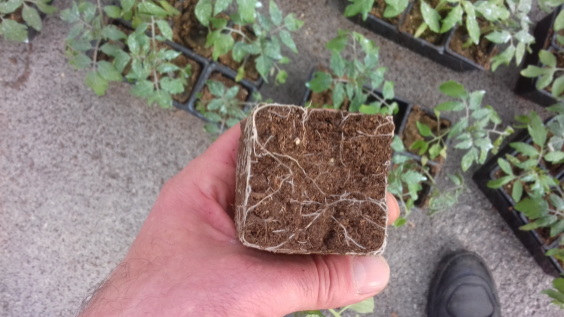
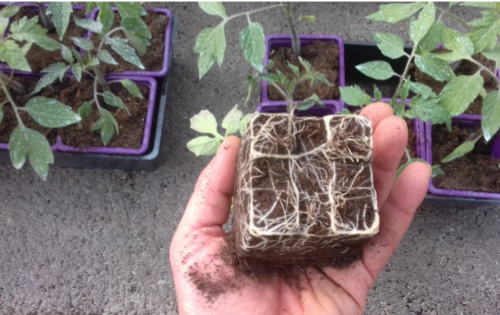
Le Grand Castaing 40180 Yzosse – France
Feedback from Michèle Courant, Master of research in computer science, Fribourg University, SWITZERLAND.
We do not have a University course background ourselves but we are always eager to understand the science, when we notice the same occurring results we go ahead and ask several postgraduates student to help us understand our results. That way, they bring us scientific explanations, in each of their specialities. The core principal of the BBG was developed by the company Natarys with which we are now copartners and our website in phytoneurology has widely expended it’s original potential. The device is equipped to add the music of the plants information to the water. this music is chosen based on the needs we have established with our expertise.
This is what Michèle courant (Fribourg University) explains after two days immersed in our work:
Since my arrival at the Plantarium I can feel that something very special is happening here. The plants, in groups, standing in the room, and their presence, of living being alongside humans is very noticeable.
Two days of introduction, exchange of experiment results and assisting to live experiments, we are absolutely fascinated. Our curiosity and minds sharpened by questioning are hanging facing these unfolding proofs. In my scientific career of 35 years, I have seen so many badly designed and run experiments that I keep a sharp eye. The smallest methodological default stands out immediately. Of course we can’t have the full details of the studies in two days, but the phenomena is there unquestionably.
Jean Thoby’s experiments are to me a mine for scientific research. If I had sponsor founding, I would gather entire teams to discover plants !
Amoung the first challenges, here are a few:
- Decode the music of the plants with and without lexical correspondance, repeating and having variations of the experiment in order to compare the results, to analyse and evaluate the extend of the plant’s initiative, the core of it’s choice and the sens of it’s action in it’s given space.
- Ditto for the therapeutic experiments with decoding the plant’s transmission in a layout (musical, proteinic and others).
- Study the repetition mechanism, of imitation and of creation showing in the music of the plants.
In short, to establish an inventory of the cognitive potential of the plants, in general and by species.
My speciality is computer science and from this perspective, it seems foolish to me nowadays to keep investing in technologic research with the main objective to feed the « innovating machine »: what’s the point in developing robots to serve coffee to people in a hurry, like in California ? or that will keep company to lonely elderly people, like in Japan ? Wouldn’t it be foolish that after we have subvert our climat, polluted our air and deteriorated our quality of life by our means of transport, we would invade the sky with drones instead of our birds ? Wouldn’t it be more reasonable to invest in the intelligence of the living… while we still can ?
The research on the plants, with Jean thoby and a few others abroad, is nothing less than an invitation to a worldwide transition, to go from the anthropocentric era of human domination on Earth to a biocentric era. The change goes beyond the Copernican revolution because this time it is our own survival in the balance.
And it has been a long time, despite the relativity and quantum physics, that any scientific discovery has shoock our vision of the world, and to use the terms of the physicists and science historian Thomas Kuhn, that no scientific revolution has happened.
Since the beginning of experimental science we are going through a long chapter of science called « normal », which exploits, create applications, refine theories, but that discovers nothing powerful enough to radically change our vision of the world itself and our place as human being, self-proclaimed at the top of the terrestrial life pyramid, which falls appart. What if it was very good news that we, humans, could become humble again ? What if stepping down from our pedestal to open up to cooperative benevolence towards all forms of life was in fact the best way to run our planet preserving humans, in the short or middle term ?
Back to my home, I connect the little Dicksonia antartica brought back from Gaujacq to the « music of the plants ». Immediately a surprising music happens : rhythmic, complex, with bass accents followed by double strikes of high notes. I have connected my indoor plants to the device countless times, I had never heard such a thing ! After Dicksonia I go to other plants, and then… surprise ! After two or three shy phrases, as if they fumbled, they start one after the other to sing like the Dicksonia ! Only a single tomato plant, from organic farming and very vigorous, keeps it’s distance. It takes the same theme by rapidly innovates and extends the music : a real chinese philharmonic , an orchestra all on it’s own ! Why obstinate in our current line of development when life appears so vast and beautiful to discover !
Ernst Zürcher
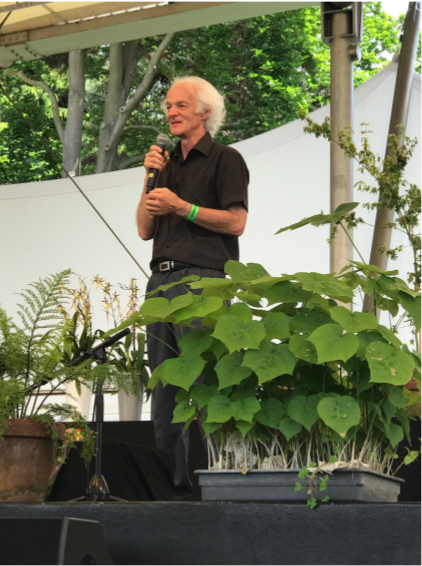
In 2015, we met Ernst Zürcher during a lecture we were both giving at Marciac in the Gers (32) (South of France). Following up this fructuous exchange of which you will find the details in the book « le chant secret des Plantes » Ernst wrote to us a nice preamble to our lectures and festivals devoted to the music of the plants.
The music of plants is a way to merge art and science. It allows to show a new face of the electrophysiology of the plants. An area studied since the end of the 18th century (by Bertholon, 1783, who introduced the idea of « electroculture »), but stayed pending for a long time. It’s as if the plant receives a new mean of expression to the world, that is unique to it. In generic way, researchers speak of these electric signals like a « real time communication mechanism between the physiologist and the plant, used to a precise detection of stress endure by the later »
(Luis A. Gurovich, Universidad Católica de Chile 2012).
And what it expresses – once put into music – sparks an uncanny emotion to the listener. Is it because the plant not only pulses according to what is happening in it’s immediate life, but also according to big astronomic cycles which conditions all being including humans ? The work of Peter Barlow (2012) – published under the little « Moon and cosmos : Plant Growth and Plant Bioelectricity » in the book « Plant Electrophysiology » (P.Volkov 2012) – aloos us to think so.
E. Zürcher, prof.em, Dr.sc.nat, Ing.forester EPFZ Historic.
Brenner, E. D., Stahlberg, R., Mancuso, S., Vivanco, J., Baluska, F., & Van Volkenburgh, E. (2006). Plant neurobiology: an integrated view of plant signaling. Trends in plant science, 11(8), 413-419. Hou, T., Li, B., Teng, G., Zhou, Q., Xiao, Y., & Qi, L. (2009). Application of acoustic frequency technology to protected vegetable production. Transactions of the Chinese Society of Agricultural Engineering, 25(2), 156-160. Qi, L., Teng, G., Hou, T., Zhu, B., & Liu, X. (2010). Influence of sound wave stimulation on the growth of strawberry in sunlight greenhouse. In Computer and Computing Technologies in Agriculture III (pp. 449-454). Springer Berlin Heidelberg.